Better Together: Authentic Tasks & Competency-Based Instruction
Over dinner one night, I was telling my family about my day. I excitedly shared the authentic challenge that Morgan, Framework Cycles’ manager, and I had set for our learners. When I paused to breathe, my husband turned to me and said, “Cool! So, you’re teaching your students to sell stuff on eBay?” Insert forehead slap here. Technically, it is true, a large part of learners’ work during this experience was posting difficult-to-sell items on eBay. And yes, I get how strange this might sound to an outside observer. However, after four years of hearing me talk about Embark, I had hoped my family knew enough to understand how deep and rigorous embedded learning can be.
“Embark combines authentic tasks, which allow learners to see the results of their learning in action, with competency-based instruction.”
This conversation demonstrated how difficult Embark’s work can be to understand. When considered from the end product alone, our learning might seem superficial. Sure, learners have designed new seasonal drinks for Pinwheel, sold Framework inventory on eBay, and brought new vendors into both shops. With a limited understanding of the behind-the-scenes work, one might think all learners do is foam milk and shop online. Let me assure you that nothing could be further from the truth. Instead, Embark combines authentic tasks, which allow learners to see the results of their learning in action, with competency-based instruction, which ensures that learners develop the skills necessary to complete each task to a professional standard.
Authentic Task
Most learning experiences begin with an authentic shop need. In this case, Morgan approached the education team with a specific request. They wanted to stock new inventory at Framework but needed to clear out some old inventory first. This included about $10,000 of bikes, helmets, panniers, bike accessories, t-shirts, and even socks. Morgan and their team had been aware of this need for several months but were too busy repairing customer bikes to make it happen. Heck, the shop didn’t even have an eBay account yet.






Enter Embark learners. Throughout a five-week learning experience, learners posted and sold over 20 items on eBay and designed, publicized, and staffed Framework’s first Sidewalk Sale. Ultimately, their efforts resulted in Framework’s most successful social media campaign ever and the sale of about 75% of advertised merchandise. No one would dispute that these results are impressive, particularly when accomplished by adolescents. However, some might question the underlying educational value. After all, even my husband was confused.
Competency-Based Instruction
For a more detailed description of Embark’s competencies, click HERE.
As an Embark educator, my job is to parse the discreet skills learners will need to accomplish any task set out by the shops. Embark is a competency-based school. We teach and provide feedback on six key competencies - agency, collaboration, communication, critical thinking, quantitative reasoning, and reflection. So the first step in my instructional planning is identifying which competencies learners need.
For this Framework task, I determined that quantitative reasoning and communication would be key in this case.
Quantitative Reasoning: Learners had to decide on an appropriate price point for each piece of merchandise. They had to determine the difference between vendor and suggested retail prices, compare prices of similar items posted online, calculate item prices at various discount levels, and determine the relative cost of keeping an item on the sales floor for longer. This work required students to work with decimals, percentages, averages, and multi-variable algebraic equations. New math skills learned and applied - check!
Communication: Learners had to use images and written descriptions to sell merchandise online. After all, when a customer cannot actually see, feel, or ride an item, all they have to go on is the descriptions provided. Write multiple ad copies for each item, using different persuasive techniques to appeal to different audiences. So, learners had to be able to use persuasive techniques and hone their writing for maximum impact with minimum length. They were also required to write two or three different ad copies for each product addressing different customer audiences using a variety of persuasive techniques. New writing skills learned and applied - double-check!
Better Together
Could learners develop these math and writing skills in a more traditional environment? Probably. Would the Framework staff have eventually gotten around to discounting and selling this merchandise? Sure. Were both the learners and the shop better served by this collaboration? Absolutely! Framework benefited from the creative powers of sixteen adolescents who dedicated hours of their time to properly pricing and persuasively advertising hard-to-sell merchandise. And the learners were motivated to learn new academic skills because their work was attached to real-world consequences.


